|
by Melanie Brown Here in New England I think we are all feeling the excitement and freshness of spring. Watching our beloved plants come back from their winter hibernation brings a sense of hope and renewal among other feelings of joy and wonderment. Usually towards the end of winter my brain starts excitedly brewing up ideas of herbal concoctions and wild harvesting that I want to accomplish during this time of year. With this feeling still in full force I am most certain that as a fellow plant lover you too have your own special plant friends that you are drawn to. Below are the green beings and recipes that I am especially in love with right now and I hope I can pass along something that sparks inspiration and brews something delightful in your life. 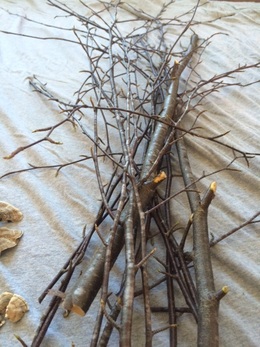 Sweet Birch twigs Sweet Birch twigs Sweet Birch (Betula lenta): Also known as black birch, this aromatic tree has an almost identical composition to wintergreen oil, with its distinct and uplifting aroma. In the 19th century it came close to annihilation in the Appalachian Mountains when the locals learned that oil made from the bark and twigs could be sold for cash. Oh humans... Rest assured there is abundance of this lovely tree here in our open woods. To identify I like to use a little scratch and sniff approach on a twig. If it smells like wintergreen then you know you have found sweet birch. I usually harvest one large branch, cut with very sharp tree pruning shears above where the branch meets the trunk. The inner bark is anti-inflammatory, anti-rheumatic, analgesic, cooling, and moisturizing. With those properties in mind sweet birch makes an incredible infused oil for massaging into sore muscles, achy joints and very dry, irritated skin. This may be used as is or you can add essential oils of cardamom, lavender and chamomile to make a really nice final scent. Mineral & vitamin rich vinegar: Spring is the ideal time to start harvesting all of the abundant, nutritive, wild greens that grace us with their presence everywhere we walk. My favorite combination includes apple cider vinegar, dandelion, stinging nettle tops, and chickweed. I get really excited about vinegars because they provide daily nutrition and health benefits that aren’t available through tinctures or teas. Use as a dressing on wild salads, or even diluted with a little water and honey to taste as a pick-me-up drink. Flower infused honey: We certainly don’t need to go into detail of the amazing medicinal qualities of honey. When you add into it your favorite aromatic flowers it just goes beyond a whole new level of pleasure. I prefer to purchase local and raw wildflower honey -- if you know a beekeeper even better. Cherry blossoms, lilacs, linden flowers, meadowsweet, hawthorn flowers, and violets are some of my favorite additions. I don’t find it necessary (or enjoyable) to strain the flowers from the finished infused honey. If fresh flowers are unavailable dried can be substituted. Plant infused moisturizing body butter: Perhaps you have jars of plant infused oils sitting on your apothecary shelves just waiting to be incorporated into an all-natural body care recipe. Summer is fast approaching and having a jar of melty skin butter to keep your skin happy and glowing just feels right. I also love knowing that the plants are being rubbed into my body on a daily basis -- there’s something magical about that. Creating your own body butter is also where you get to be really creative and tailor it to your skin type. Oils of olive, sweet almond, and apricot kernel are all suitable for the base. Calendula, red clover, comfrey leaf, self-heal, violet, elderflowers, burdock root, and rose are all nice options for infused oils. Coconut oil, shea, cocoa, and mango have been my favorite butters to use. To make: use 3 ounces each of two plant butters of your choice, 1 ounce of coconut oil, 3 ounces of infused oil, and a half ounce of beeswax. Combine above ingredients in a double boiler and gently warm until everything is fully incorporated. Remove from heat and allow to cool until consistency starts to harden. At this point take a hand blender and whip until fluffy. Store in glass jars. Spring holds within it the essence of new growth, unlimited possibilities, and a carefree wild spirit. My hope is for us all to embrace this child-like wonderment and frolic through the forest and fields, basket in hand, gleefully and lovingly playing with our plant friends.  Melanie Brown is a native New Englander who always had an early connection to nature and the outdoors. Together with her four year old son she gathers the ingredients to make small batch plant based body care products which you can find at her herbal apothecary, FIR&ELM. She is a graduate of Boston School of Herbal Studies and currently apprenticing with Margi Flint of Earthsong Herbals. Her passion is to share and spread the message of community herbalism that lies right outside in our own backyards. by Melanie Brown
A wealth of folklore, magic, and superstition is attached to this shrub-like tree, often described as a “complete medicine chest,” because of its extensive healing abilities on a wide variety of ailments. The most used species is Sambucus nigra, which grows throughout North America, Europe and many other parts of the world. Its history of medicinal use includes the entire plant in different preparations and dosages, such as the fresh leaf tincture as a reliable nervine. Today most commonly used are the fragrant white flowers that bloom in the spring and the ripe purple-black berries in the fall. The entire plant has shown to possess both anti-viral and anti-bacterial properties while also being a moderate immune system stimulant. Submitted by Zoe Keller of One Beet. Hello Herbstalk community! It’s a treat to be sharing one of my recipes with you today. Pesto is one of the best herb delivery vehicles around. It also happens to be completely delicious and incredibly versatile. I’m a sucker for the old standby, basil pesto, but also love to get creative with new pesto creations (garlic scape pesto, and three herb pesto are two of my favorites). The possibilities are endless! I recently tried my hand at dandelion pesto and the results were terrific. I used the pesto to make delicious little appetizer crostinis, but it can also be slathered on sandwiches, eaten with eggs, blended into hummus, and enjoyed straight from the jar with a spoon. It easily keeps for 2 weeks in the fridge and can be frozen for up to a year. It doesn’t get much better than that for preserving the fresh, wild food of the season. Dandelion Pesto Ingredients:
Directions (10 minutes): Blend all the ingredients in a blender or food processor until smooth and creamy. Feel free to add a dash of water if your pesto needs to be thinned. To make the crostinis, toast slices of French bread or use crackers as the base. Spread with a thin layer of dandelion pesto, top with a slice of manchego, parmesan, or romano cheese, and warm in the oven for 10 minutes until the cheese melts. I brought these to a dinner party with friends and they were a total hit. Even the kids were gobbling them up! And of course I couldn’t help myself from reminding everyone of the medicinal properties of dandelions while we were eating them. Once an herbalist, always an herbalist! So, why are dandelion greens good for you? As with many foods that have a bitter flavor, they have a strong cleansing and detoxifying action in the body. In addition, dandelion is high in minerals, such as potassium and calcium. It helps the liquids of the body move freely, which can release blockages and aid in flushing toxins out of the system. In particular, it supports the liver, kidneys, and bladder – all of which can benefit from a spring-cleaning this time of year. After a cold winter of eating sturdy, nourishing root vegetables and heavy, warming dishes, it’s time to lighten up. Our bodies start to crave spring greens, fresh food, and smaller meals. And it’s important to listen to the body and follow these clues about what to eat. Spring greens are one of the healthiest foods after a cold and sluggish winter. They offer a mega-burst of nutrients, cleanse the body, and are energetically lightening. Eating dandelion is a gentle and natural way to invite the benefits of detoxification and the energetics of spring into your life. If you’re looking for even more dandelion, try my garlicky dandelion greens + farmers egg. Enjoy!  Zoe Keller is a Boston-based health coach, foodie, herbalist, and general wellness warrior. Her blog, One Beet, is dedicated to celebrating the goodness of food through recipes that maximize flavor and nourishment. Submitted by Nathaniel Putnam of Psymposia. The divine drink which builds up resistance and fights fatigue. A cup of this precious drink permits a man to walk for a whole day without food. Hernan Cortes, 1528 The winter season is a time for hot cocoa and with Valentine’s Day around the corner, there is more to chocolate than just a sweet treat. Chocolate has many medicinal uses for the body and the mind, as a cardiac stimulant, an appetite suppressant, neurotransmitter enhancer, antioxidant and an aphrodisiac. However, the experience that one gets from eating a Hershey’s mlik chocolate bar versus drinking a brew of raw cacao is truly different. Raw cacao is the dried seeds of the tree Theobroma cacao. The seeds or “beans” are found in the cacao pod that falls from the tree when ripe. The beans are surrounded by a clear/white sweet pulp. This pulp can be eaten as a delicacy but that is a story for another time. The beans are scooped from the pod, and left to ferment and dry in the sun for a several weeks. This process changes the beans from a purple to brown color and the dried beans store better for trade and transport. Each pod contains about 20-50 beans, enough for 3-4 dark chocolate bars. A Sweet History The Swedish scientist, Carl von Linnaeus named the tree Theobroma cacao from the Greek words, “theo”, for god and “broma”, for food. The use of cacao dates back at least to 2,000 BCE and scholars have found drinking vessels from the pre-Mayan civilization, the Olmec, inscribed with “ka-ka-wa”. The word “chocolate” was most likely a word coined by the Spanish during the early conquests so it became known as “xocolatl”, a combination of the Mayan word, xococ (sour, bitter) and the Aztec word, atl (water). To the indigenous communities of Central and Latin America, the chocolate tree provided a cash crop that was used as currency, a tradition documented by Columbus and his crew. One cacao bean could be used to purchase a large tomato or a freshly picked avocado, 100 beans could get you a turkey and 30 would by you a small rabbit. Powdered cacao beans are still used as a drink in modern Central America but the taste is different from the Dutch cocoa that you are used to buying at most grocery stores. The Dutch cocoa is processed using a method patented in 1828 by the chemist Coenaraad Johannes Van Houten in his search to make a new low fat powder. The powder is the pulverized form of a pressed cake that Van Houten made by squeezing the oils (fat) from the dried cacao beans. In order for his powder to mix well with water, Van Houten treated the powder with alkaline salts like potassium or sodium carbonates, a process known as “Dutching”. Most hot cocoa mix is often a combination of the bitter cacao bean powder mixed with refined sugar. The first chocolate bar was produced in 1879 by a Swiss chemist, Henri Nestle and Swiss candle-maker turned chocolatier, Daniel Peters. Nestle figured out the process for removing the water from milk to create a powdered form and Peters then added it to his chocolate. The bar was first marketed under the Peter’s/Cailler brand and later merged with Nestle in 1929. Chocolate in your Body Cacao bean powder contains over 50 chemical compounds, including epicatechins, histamine, magnesium, polyphenols, theobromine, and vitamin C. Of the all the phytochemicals in cacao, the antioxidants, theobromine and caffeine are the most abundant, about 1-3% by dried weight. A diet high in antioxidants is important for cleaning up free radical oxygen molecules that have been shown to damage DNA, promote premature aging, and contribute to an increase risk for heart disease and cancer. Dark chocolate contains more antioxidants, per gram, than fresh blueberries, blackberries and raspberries combined. The additions of sugar and dairy products lower the absorption of the antioxidants in the cacao bean so mix your cacao powder with water or a plant-based milk, like coconut, almond or hemp. Theobromine is a chemical found in about 19 species worldwide including plants like coffee, tea, yerba mate and kola nut. Theobromine stimulates the central nervous system, relaxes smooth muscles, dilates blood vessels and is a mild diuretic. The amount of caffeine in chocolate is small compared to coffee or tea. A 50 gram chocolate bar contains about 10-60 milligrams of caffeine whereas a cup of coffee has about 175 milligrams and a cup of tea varies from 25-100 milligrams. Themobromine and caffeine are more active when the cacao beans have been cooked or roasted and not in the raw nibs form. Chocolate on the Brain Cacao contains three psychoactive chemicals; anandamide, phenylethylamine, and tryptophan. Anandamide is known as the “bliss chemical”. It reacts on the same receptor as the THC molecule found in the cannabis plant but the effect is less powerful. High levels of anadamide can also be experienced as the great feelings of happiness that one gets after vigorous exercise, known as the “runner’s high”. Cacao also contains two anadamine inhibitors. These molecules slow the metabolism of anadamide and allow the feeling of well-being to stick around with us a little longer. Phenylethylamine (PEA) has been marketed as the “love chemical”. Chocolate can contain up to 2.2%. While scientific research has yet to confirm a direct “love” connection, PEA levels are higher in the brain when we fall in love, become sexually aroused and peak during an orgasm. PEA levels are lower in those suffering from depression. PEA increases the levels of dopamine and norepinepherine and affects mental concentration, positive attitude and joy. Tryptophan is an amino acid that aids in the production of seretonin. Cacao powder contains about 0.2%-0.5%. Tryptophan reacts in combination with vitamin B3, vitamin B6 and magnesium (also found in cacao) to form seretonin. Trytophan helps produce other neurotransmitters, like melatonin that promote sleep. Trytophan is heat sensitive, however, so eating raw cacao beans is best way to increase these animo acid levels. Cacao drinks are a major component of Central American shamanism and often in combination with ayahuasa, psilocybe mushrooms, cannabis and some species from the Leguminosae family. Recipes (adapted from Naked Chocolate by David Wolfe): In searching for cacao at the supermarket, there are few things to keep in mind:
Hot Chocolate (makes about 4 cups) 2 cups of almonds, soaked overnight 1/2 liter of water 4 tablespoons of raw cacao powder (nibs or beans) 2 tablespoon of raw agave nectar Blend half the water with the almonds. Pulverize and strain out liquids into another container. Put pulverized almonds back into blender and add remaining water. Blend and strain again. Combine about 1 pint strained almond milk with raw cacao powder and agave syrup. Add hot water for desired temperature, whisk and serve. Dark Chocolate Sauce 4 tablespoons of raw cacao powder (nibs or beans) 3 tablespoon of raw agave nectar ½ tablespoon coconut oil Mix all ingredients until blended. Add more agave for a syrup or coconut oil for a creamier texture. Chocolate Fudge (about 30-40 pieces) 1 cup of pitted dates, soaked in 1.5 cups of water for 1-2 hours 1 vanilla bean 2.5 cups of almonds 2 tablespoons of raw cacao powder (nibs or beans) ½ cup of dried shredded coconut Process all ingredients, including soak water in a food processor until smooth. Press into square pan lined with waxed paper. Freeze for two hours. Remove from freezer and slice into 1-2 inch pieces and place in freezer for at least another hour before serving.  Nathaniel serves as the Educational Coordinator of the Medicinal Plant Program at UMass Amherst. He has traveled to over 15 countries and leads a field study course to Peru on the medicinal plants of the Amazon rainforest. He also writes about ethnobotany, with a focus on plants for mental health and use in psychotherapy. Nathaniel is co-founder of Psymposia, which will be held this year on April 12th & 13th at UMass Amherst. Fire Cider Awareness Week, we offer you a few recipe variations of this much-loved traditional herbal remedy. It has been a staple of herbalists for generations. Vinegar-based tonics like fire cider and vinegar shrubs have been making a come-back as of late. What was once perceived as an old-fashioned remedy is now becoming a practical pantry staple in contemporary kitchens. And rightly so – there are many wonderful health benefits of herb-infused vinegars. Fire Cider, for instance, with it’s potent combination of warming and immune-stimulating herbs is fantastic for helping you stay healthy and strong during cold and flu season. Garlic and onions, with their sulfur-rich compounds provide an anti-bacterial and anti-viral punch, while cayenne, ginger and horseradish are warming, circulatory herbs that get your blood moving. Fire Cider is useful if you feel a winter bug starting to take hold – take a small glassful of it every few hours to increase your resistance. One of our most beloved herbal elders, Rosemary Gladstar, published her now-famous fire cider recipe decades ago. Rosemary has been teaching about traditional herbal medicine for most of her life and has freely shared many of her recipes with the herbal community with a profound effect. One of her most popular and iconic recipes is Fire Cider, which is a simple recipe that is easy to make at home. It is as follows (shared from the Sage Mountain website): Fire Cider
Chop fresh garlic, onions, and horseradish into small pieces. Grate fresh ginger. The amounts and proportions vary according to your particular taste.. If unsure, start with equal amounts of the first three ingredients and roughly half part ginger the first time you make this; you can always adjust the flavors in future batches. Chop enough of the first four ingredients to fill a quart jar approximately half full. Put in wide mouth quart jar and cover with apple Ccder vinegar (keep vinegar about two to three inches above the herbs). Add cayenne to taste (just a small amount or it will be too hot!). Let sit two to three weeks. Strain and discard spent herbs. Add honey to taste (add the honey after you strain the rest of the herbs). Watch a video of Rosemary making Fire Cider here. There are many ways to be creative with this recipe and make it your own. Some people add in herbs like turmeric, schisandra or hibiscus. Some add in fruits. I enjoy this red-hued recipe of Juliet Blankespoor.Mountain Rose offers a recipe that involves rosemary, and also suggests additions/substitutions such as peppercorn, rosehips and burdock. Kiva Rose developed a variation for sensitive stomachs, sans cayenne peppers and with beautiful additions of herbs like hawthorn and basil. The possibilities really are endless. So, here’s to this lovely and practical remedy, and to our herbal elders who have passed it down to us from generation to generation! We thank the countless guardians of traditional herbal medicine who have made the knowledge of recipes like this available to us all.  Submitted by Steph Zabel of Herbstalk |
Archives
November 2023
Categories
All
|
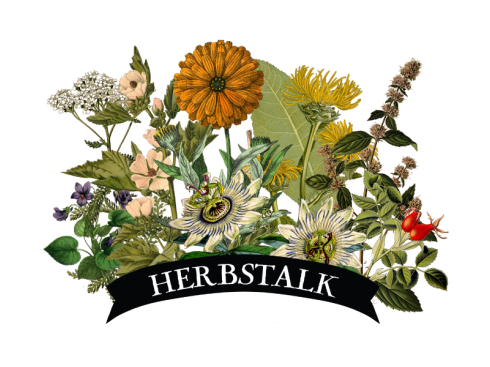
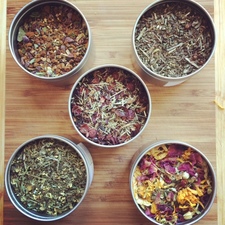
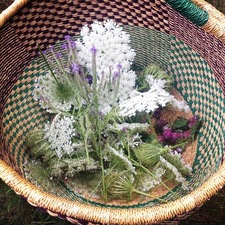
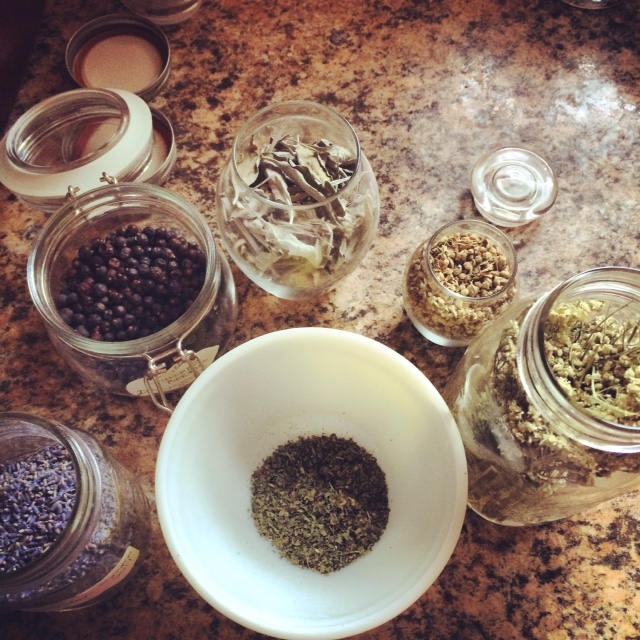
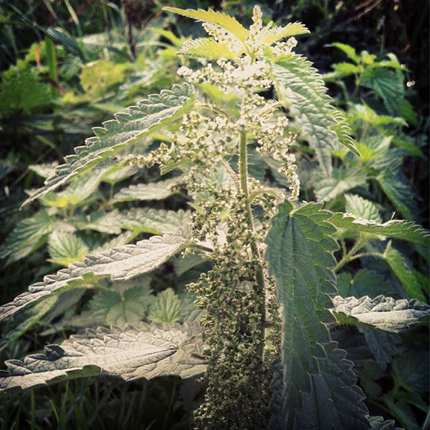
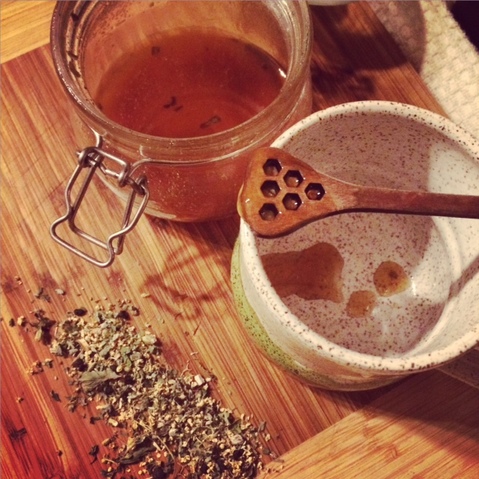
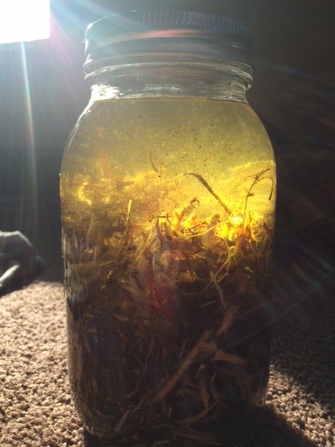
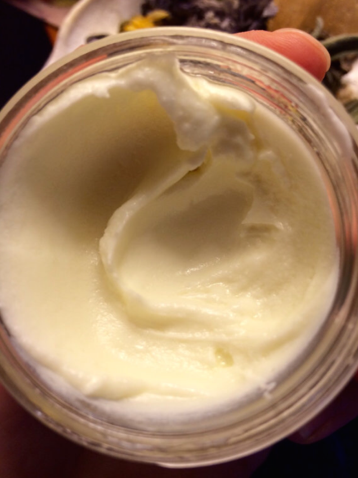
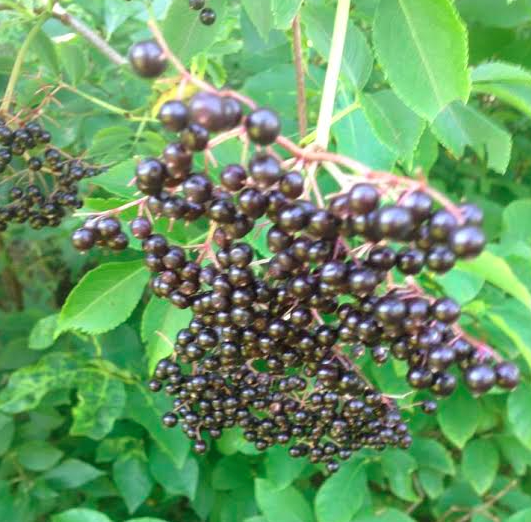
 RSS Feed
RSS Feed